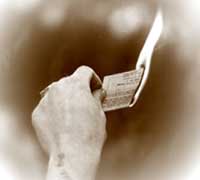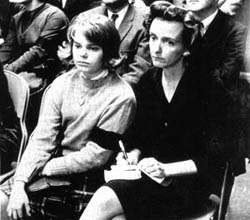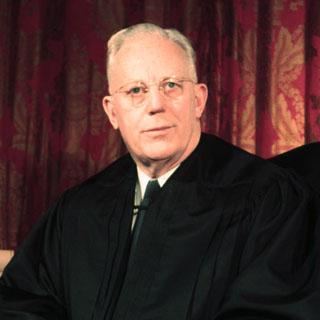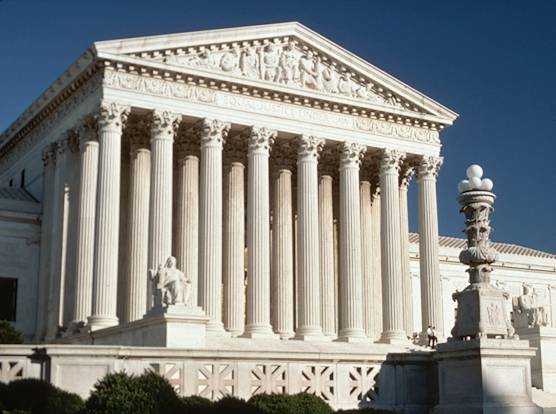These are the links that were used for the information on this site:
http://www.firstamendmentcenter.org/faclibrary/case.aspx?case=Tinker_v_Des_Moines_Independent_Community_School_Dist
http://www.northsideprep.org/ncphs/depts/social_science/tdevine/USG/Con%20Law%20Webpage/Tinker%20v.%20Des%20Moines.pdf
http://www.oyez.org/cases/1960-1969/1968/1968_21
http://www.oyez.org/cases/1960-1969/1968/1968_21/argument
http://www.infoplease.com/us/supreme-court/cases/ar39.html
http://www.streetlaw.org//en/Page.Landmark.Tinker.background.three.aspx
http://www.edweek.org/ew/articles/2005/05/04/34tinker.h24.html
Wednesday, March 16, 2011
Article About Mary Beth Tinker
http://www.washingtonpost.com/wp-dyn/content/article/2005/09/15/AR2005091502238.html
This article is about what Mary Beth Tinker is currently doing in regards to her case. Just over four decades after the Tinker case, Mary Beth is still visiting schools and teaching students about thier constitutional rights and still wearing a black armband. This particular school visit took place at a high school and a law school on the newly mandated Constitution Day. While she was there, she got a class of dazed high schoolers to become interested in things that they felt were wrong with our society and how they could change it. She advocated for students to stand up and to make the choice that they felt was right in the face of adversity, just like she and her brother did in 1965. After standing up, the Tinkers received hate mail, bomb threats on thier house and death threats. One radio host even said that he would fund the defense for anyone who went after them with a shotgun. However, the Mary Beth and her family stood firm and changed students' lives. After hearing Mary Beth's story about how she stood up for something she believed in, many of the students felt that Constitution Day wasn't so much of a waste after all.
This article is about what Mary Beth Tinker is currently doing in regards to her case. Just over four decades after the Tinker case, Mary Beth is still visiting schools and teaching students about thier constitutional rights and still wearing a black armband. This particular school visit took place at a high school and a law school on the newly mandated Constitution Day. While she was there, she got a class of dazed high schoolers to become interested in things that they felt were wrong with our society and how they could change it. She advocated for students to stand up and to make the choice that they felt was right in the face of adversity, just like she and her brother did in 1965. After standing up, the Tinkers received hate mail, bomb threats on thier house and death threats. One radio host even said that he would fund the defense for anyone who went after them with a shotgun. However, the Mary Beth and her family stood firm and changed students' lives. After hearing Mary Beth's story about how she stood up for something she believed in, many of the students felt that Constitution Day wasn't so much of a waste after all.
Monday, March 14, 2011
Tinker v. Des Moines Game
http://games.sunnylandsclassroom.org/Preview/Games/?gameid=3
This is an interactive game that gives a basic break down of the First Amendment, and then proceeds to facts of the case, precedents, the courts, the Supreme Court, and the arguments. Each "station" of the game gives a brief overview of the information, provides definitions of key words relevant to the information being given, and provides a game at the end of each portion of the station. It also includes videos pertaining to free speech from the justices.
This is an interactive game that gives a basic break down of the First Amendment, and then proceeds to facts of the case, precedents, the courts, the Supreme Court, and the arguments. Each "station" of the game gives a brief overview of the information, provides definitions of key words relevant to the information being given, and provides a game at the end of each portion of the station. It also includes videos pertaining to free speech from the justices.
John Tinker's Views on the Case
http://schema-root.org/region/americas/north_america/usa/government/branches/judicial_branch/supreme_court/decisions/schools/tinker_v._des_moines/~jft/jft.faq.html#what_was_the_decision
This is a link to John Tinker's current page concerning the case and his life, which contains a series of frequently asked questions. One of the questions that he addresses is the motivation for why he believes that the school officials suspended his sister and him when they willingly took off their armbands. He says that he believes that their true motivation was not actually to preventa disturbance but was rather to present themselves in a better, more patriotic life. After all that had occurred with the Vietnam War, Tinker felt that if the school officials were caught being lenient on students who were expressing their opinion against it, it would reflect badly on them, hence the outrage that ensued. He also said that after the case was decided, he heard of some principals misrepresenting the information by quoting the dissenting opinion. However, he did state that several schools respected the opinion and even encouraged their students to utilize their right to free speech.
Sunday, March 13, 2011
Mary Beth Tinker Video
This is a video created in honor of 2006 National History Day to commemorate those that took stands for their rights. This video specifically focuses on Mary Beth Tinker.
40th Anniversary of the Tinker Case
This is a student produced video featuring a video of Mary Beth Tinker and students talking about the impact that the case had on thier lives.
Why It's a Landmark Decision
This case is a landmark decision because, for the first time, it gave students the right to exercise their First Amendment right to free speech as long as it is peaceful and orderly and not disruptive. The Tinker standard is still used today to assess the constitutionality of school policies and students’ actions while they are in school.
Even though the Tinker case guarantee's protection of student's First Amendment rights to free speech, the right has been modified through other cases involving students. In Bethel School District v. Fraser and Morse v. Frederick, student speech was limited. It cannot be disruptive or vulgar, even if it is just innuendo, or if the speech is condoning illegal drug use. Additionally, student speech, as well as student freedom of press, was limited in Hazelwood School District v. Kuhlmeier, which determined that speech and press could be limited if the principal did not feel it was in line with the education goals of the school. In all, student speech must go under three considerations by the courts: threat of disruption, offensiveness in light of community standards, and impairment to the school's educational mission and goals.
The Decision
Following the arguments presented on November 12th, 1968, the Supreme Court went into conference and debated the issue behind closed doors, as well as other issues argued around the same time and the future calendar. Then on February 24th, 1969 in a 7-2 decision, the Supreme Court ruled in favor of the Tinkers, saying that they did indeed have the right to wear the black armbands in protest of the Vietnam War. It was the opinion of the Court that even though the school environment does mean that a student’s speech is limited, it does mean that they leave every right behind upon entering the school. They also extended these constitutional rights to the teachers and that if a school is going to regulate their rights, they need to have a constitutional reason beyond trying to avoid discomfort and raised tempers. Furthermore, it must be a substantial disturbance they are trying to prevent and it must apply evenly to similar forms of speech. ( In the Tinker case, the Court found that the policy was specifically targeting armbands and not any other politically charged garments or fixtures that could have caused similar issues.) The opinion was written by Justice Abe Fortas.
There were also two dissenting opinions given by Justices Black and Harland. Black dissented because he felt that symbolic speech was not protected by the Constitution and therefore the school system had the right to ban it as it saw fit. He also believed that free speech should be restricted to appropriate circumstances and could not be used whenever the person saw fit. He felt that the Tinkers were being purposely disobedient and defiant to an authority figure and this case signaled the beginning of a new age of children in the education system. Harlan disagreed because he saw nothing that proved the school system had overstepped its bounds when it said it was trying to prevent a disturbance.
The Des Moines Oral Argument
The oral argument then went to Allan A. Herrick representing the Des Moines, Iowa Independent Community School District. He argued that there were two issues that needed to be handled, which the schools did, and was when the school could prevent disruptions in the school due to free speech and just how far the Court was willing to extend the students’ rights. He said that basically the schools were acting in good faith in trying to prevent a disruption and that the Court had already stated in previous cases that the free speech was not absolute depending on the time and place of the speech. He then quoted Adderly v. State of Florida, in which seven hundred students had protested the arrest of students by walking from the university to the prison. However, the justices brought up the disparity between the size of the two groups and wondered how the seven students could disrupt 18,000 like the 700 in Florida could.
Herrick also argued that there indeed had been an incident due to the armband worn by John Tinker, in which one or two boys had been hit in a fight. Additionally, the school board was just reacting to a series of events that had occurred in relation to the Vietnam War before the armband policy had been implemented. There had been a march and two draft card burning incidents that had caused the already highly charged issue to become even more so in the area. When they heard about the Tinkers’ plans, they were just trying to prevent the students from getting into heated arguments that could turn violent and disruptive over the differences in opinion about the Vietnam War. The justices then countered by saying if this logic was applied, then the taking away of First Amendment rights in any community that was experiencing political unease would be perfectly legal.
Herrick then returned to the issue mentioned previously about when the students’ First Amendment rights could be abridged. He said that those rights are not absolute and that if it is in the public interest and good to prevent the disturbance from the speech, then it should be done. He also said the school system was obligated to create a disciplined, academic environment in which students could learn effectively in the classroom. He also argued that the school systems and the states have the right to run their schools and make its policy with limited interference from the federal government due to reserved powers.
The Tinker's Oral Argument
The first oral argument was for the Tinkers, given by Dan Johnston. His argument mainly focused on a certain stipulation given in not only the armband policy given by the school board, but also the case of Burnside v. Byars. This stipulation, as stated in Burnside, was that First Amendment rights could only be curtailed when there was the threat of substantial disruption. However, the record showed that there had been no such disruption. On the first day of the incident, Echardt was suspended in the morning and there were no incidents relating to him or his armband. The same day, Mary Beth Tinker wore her armband all morning and even talked to several other students about the armband during her lunch and free periods. Again there was no disruption. The next day, when John Tinker wore his, he likewise went all morning wearing the armband without any incidents.
When the question was raised by Justice White about whether or not they wore their armbands in the classroom and if this caused a disruption in the learning environment, Johnston gave the argument that no one, including teachers and other students, testified that the armbands were in any way disruptive. However, Justice White continued saying that if the armband was doing what it was intended to do, that is conveying a message effectively, then children in the classroom would be shifting their attentions to the message from what they were supposed to be doing. It was then revealed that this policy was applicable to the entire building at all times, including breaks and lunch periods, and Johnston contended that this policy was the result of the school board trying to ensure that political views they did not agree with were not expressed in the school environment.
At this point, the mootness of the case, or whether or not it could still be applied when the decision is issued, was disputed. The justices asked how the case could still be applicable if the students were out of school or if the Vietnam War were ended before the decision was issued by the Court. However, Johnston argued that while the case would appear moot in reference to the Tinkers, they had applied for damages and they had received a punishment of six days suspension. Additionally, this would be an issue that would come up time and time again as students started finding their voices and wanting to express them. If they found themselves severely limited by the schools, then they would continue to bring the issue to the courts.
The Supreme Court
The Court: Warren Court
Writ of certiorari was granted by the Supreme Court on March 4th, 1968 and the case was argued on November 12th, 1968. There was also one amicus curiae brief submitted with the case, a brief by Roy Lucas and Charles Morgan, Jr. on behalf of National Student Association. In it, they begged the court to reverse the lower courts’ decisions and uphold a student’s right to free speech at school.
On November 12th, 1968, Dan Johnston argued the case for the Tinkers and Allan A. Herick argued the case for the Des Moines Independent Community School District. Earl Warren was the chief justice at the time.
On November 12th, 1968, Dan Johnston argued the case for the Tinkers and Allan A. Herick argued the case for the Des Moines Independent Community School District. Earl Warren was the chief justice at the time.
The Next Steps to the Supreme Court
In the suit, he requested a $1 payment and a command for the schools to stop their new policy under 42 U.S. Code 1983. In September of 1966, the court recognized the rights of the students to free speech, but there was no ruling forcing the school district to stop the armband policy. Loosely using Burnside v. Byars, the court said that the armbands could have caused a disruption due to the protest and that the school officials were correct in limiting their speech.
After this court had released its opinion, the Tinkers took their case to the U.S. Court of Appeals in 1967. However, similar issues came up as in the U.S. District Court and there was a tie. As is the procedure when a tie results in an appeals case, the U.S. District Court’s ruling stood. Knowing that there was one more option left to them, the Tinkers submitted a petition for writ of certiorari of the Supreme Court.
Tuesday, March 8, 2011
Who was involved with Tinker v Des Moines?
The Players: John Tinker
Mary Beth Tinker
Christopher Echardt
Mary Beth Tinker
Christopher Echardt
Background Infromation: In December of 1965, John and Mary Beth Tinker and their friend Christopher Echardt, who were 15, 13, and 16 respectively, were attending the public schools of Roosevelt High School, North High School, and Warren Harding Junior High School in the Des Moines, Iowa Independent Community School District. In an effort to protest the Vietnam War and to support the truce that had just been proposed by Senator Robert Kennedy, the students devised a plan to wear black armbands decorated with a peace sign. Upon hearing about the students' intentions, the principals in the school district developed a policy on December 14th, 1965 that explicitly forbade any armbandsd in school. If any student was caught wearing an armband, they would be asked to remove it or suffer suspension. The suspension would only be lifted upon their agreement to comoe to school without the armband.
Despite the new policy, the students attended school on December 16th, 1965 with their armbands, which they were told to remove. They refused and were promptly suspended until January 1st, 1966. When they returned, they did not wear their armbands, but that same day the Tinkers' father filed a civil lawsuit against Des Moines, Iowa Independent Community School District in the U.S. District Court for a violation of his children's First Amendment right to free speech.
Subscribe to:
Comments (Atom)














